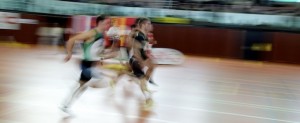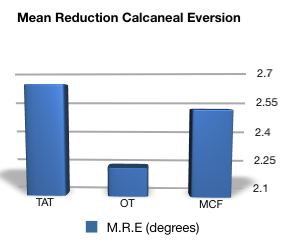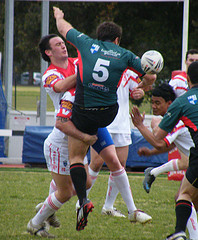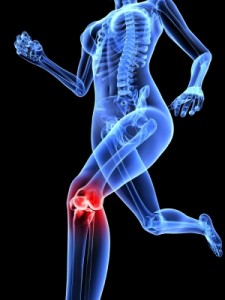As a sports physiotherapist, it is important that you not only rehabilitate athletes but ensure that they are fully fit to return to play. As many of you are fully aware, objective measures such us a full active range of motion does not determine an athlete’s readiness to RTP. Accordingly, a comprehensive assessment of an athlete’s function, via functional performance testing, becomes an absolute assessment necessity. This article will discuss current research on the the role and implementation of functional performance testing, as well as some tests that you may use in your own clinical practice.
How regularly do you treat injured athletes with reduced lower limb flexibility? The answer from many of you would likely be all day long! It has been well established that athletes with reduced lower limb flexibility are at greater risk of injury (Murphy et al., 2003). Thus, it would be logical that a program of regular stretching, which has been shown to improve lower limb flexibility (Harvey et al., 2002), would reduce this injury risk… wouldn’t it? Well, not conclusively…
Patellofemoral pain syndrome is a condition that is commonly encountered by the sports physiotherapist. There is a clear reason for this, it has been reported to affect approximately 25% of athletes (DeHaven & Lintner, 1986). Furthermore, it is the most commonly reported injury sustained by runners (Taunton et al., 2002). Thus, it is the subject of much discussion on this site, and we have provided articles on a number of management options for patellofemoral pain syndrome. However, this article will discuss new research on potential prospective indicators for the development of patellofemoral pain syndrome.
This article will discuss the health benefits of resistance training in adolescents. I would suggest that physiotherapists that help children and adolescents with their injuries will often be prescribing resistance exercises; they might be in the form of a Theraband exercises, body weight exercises (squats, calf raises’ etc.) or an exercise with added free or machine weights. Now I know that I strive to be evidence based with my practice and I am sure you are in the same boat! So let’s have a look at what gains can be made with resistance training.
On a daily basis sports physiotherapists assess and diagnose in an attempt to establish contributors to injury. When assessing lower limb injuries one of the most common offenders seems to be excessive dynamic pronation. As you know this movement is required during stance phase to allow for normal patterning. Pronation is not always evil! However, where we get into trouble is when there is excessive pronation. This article will discuss the effectiveness of various external controls in preventing excessive pronation…
If you are a sports physiotherapist that manages athletes that compete in contact sports, then I am sure that you have treated contact or collision related injuries. Now sports physiotherapists who work with rugby league will take specific note and interest with this research. Do not despair if you do not work with rugby league, you may have experience working with similar contact sports such as rugby union. This post discusses new research on physical collisions in professional rugby league, their impact on injuries and the sports physiotherapy implications.
Today we are mixing it up. We are going to do something a little bit different. Today is a guest post from Richard Evans, who is the Head Physiotherapist from Right to Dream (discussed below). We have had a few contacts with Rich, and he was keen to get involved with contributing some content to the site. So from this month, Rich will be contributing to the site by adding some of his own clinical tips and posting interesting case studies for discussion amongst the community here at TheSportsPhysiotherapist.com. I thought that he was in such a unique and interesting situation I could not say no. He has got some great things to talk about from a unique perspective, so enjoy (over to you Rich)…
As a sports physiotherapist I am frequently asked by my athletes do I know about the latest in dietary, workout or “get huge/play like superman” supplement. What is in it, what does it do, and how much can I take before an alien busts out of my chest? Firstly, I make the statement that I am not an expert dietitian or nutrionist (not even close). Additionally, these new different supplements seem to come out so fast it is exceptionally challenging to keep up with either the “proposed” or “proven” mechanisms of action. So what should we do…?
Hamstring injuries are an extremely common sporting injury. Hawkins et al. (2001) showed that hamstring injuries accounted for approximately 12% of football injuries. In certain sports, such as Australian Football, hamstring injuries have the highest incidence of any injury (Warren et al., 2010). This means that many teams, and their sports physiotherapists, invest massive amounts of time and energy in hamstring injury prevention. This is clearly based on the adage that ‘prevention is better than cure’. So what can we do to prevent hamstring injuries??
Patellar tendinopathy, commonly referred to as “Jumper’s Knee”, is a common overuse lower limb injury. In certain sporting populations, such as elite volleyball, the incidence can be as high as 45% (Lian et al., 2005). Thus, it is easy to see the importance of the identification of risk factors for patellar tendinopathy. Additionally, once identified such risk factors have clear implications for both the prevention and rehabilitation of this condition. This article discusses the latest research identifying risk factors for the development of patellar tendinopathy.
In the past this site has featured some lighter, colloquial blog posts. These articles discuss issues related to the greater physiotherapy community. Thus, I present a few mantras I have heard, adapted or made up for the physios to live by in the coming year.
Radial tunnel syndrome is rare, it is challenging to differentially diagnose and can be a monster to manage. If you have a recalcitrant case of tennis elbow then this post will interest you! This article discusses the best available evidence for assessment and management of radial tunnel syndrome.









